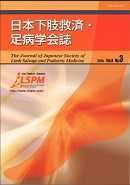Volume 8, Issue 3
Displaying 1-13 of 13 articles from this issue
- |<
- <
- 1
- >
- >|
Opening Article
-
Article type: Opening Article
2016Volume 8Issue 3 Pages 121
Published: 2016
Released on J-STAGE: September 30, 2016
Download PDF (159K)
Review Articles
-
Article type: Reviews
2016Volume 8Issue 3 Pages 123-129
Published: 2016
Released on J-STAGE: September 30, 2016
Download PDF (373K) -
Article type: Reviews
2016Volume 8Issue 3 Pages 130-136
Published: 2016
Released on J-STAGE: September 30, 2016
Download PDF (1416K)
Special Topics
-
Article type: Special Topics
2016Volume 8Issue 3 Pages 137-146
Published: 2016
Released on J-STAGE: September 30, 2016
Download PDF (1547K) -
Article type: Special Topics
2016Volume 8Issue 3 Pages 147-153
Published: 2016
Released on J-STAGE: September 30, 2016
Download PDF (1346K) -
Article type: Special Topics
2016Volume 8Issue 3 Pages 154-164
Published: 2016
Released on J-STAGE: September 30, 2016
Download PDF (1264K) -
Article type: Special Topics
2016Volume 8Issue 3 Pages 165-172
Published: 2016
Released on J-STAGE: September 30, 2016
Download PDF (1436K)
Our Address to Limb Salvage(9)
-
Article type: Our Address to Limb Salvage(9)
2016Volume 8Issue 3 Pages 173-181
Published: 2016
Released on J-STAGE: September 30, 2016
Download PDF (2039K)
Original
-
Article type: Original article
2016Volume 8Issue 3 Pages 182-187
Published: 2016
Released on J-STAGE: September 30, 2016
Download PDF (748K)
Case Report
-
Article type: Case Report
2016Volume 8Issue 3 Pages 188-192
Published: 2016
Released on J-STAGE: September 30, 2016
Download PDF (643K)
Other Article
-
Article type: Other articles
2016Volume 8Issue 3 Pages 193-197
Published: 2016
Released on J-STAGE: September 30, 2016
Download PDF (799K)
Abstracts from Regional Chapter Meetings
-
2016Volume 8Issue 3 Pages 199-206
Published: 2016
Released on J-STAGE: September 30, 2016
Download PDF (222K) -
2016Volume 8Issue 3 Pages 207-215
Published: 2016
Released on J-STAGE: September 30, 2016
Download PDF (2947K)
- |<
- <
- 1
- >
- >|
